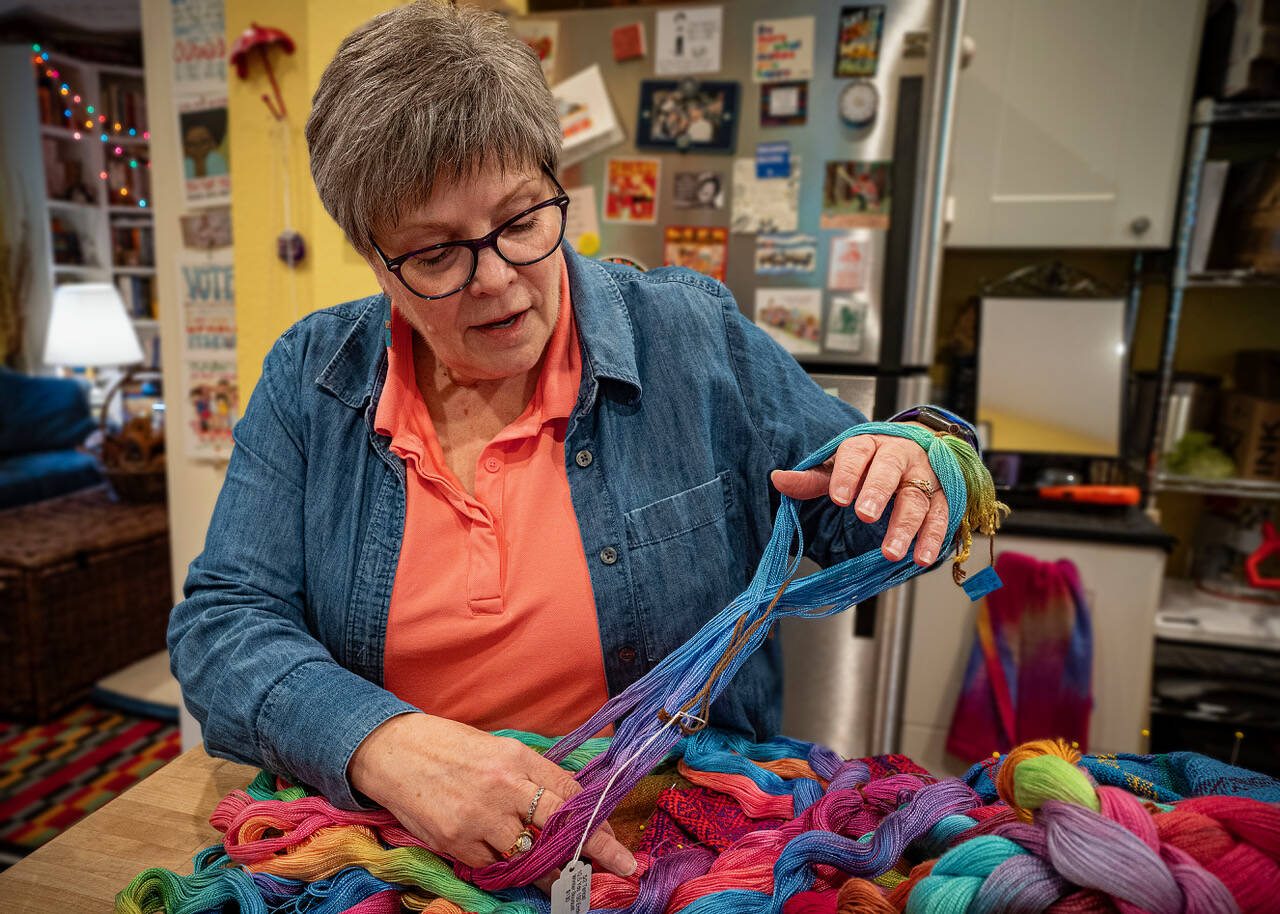For the past two decades, people have been taking a peek into the studios of professional artists scattered around Whidbey Island, thanks to an annual two-day event.
This year, 44 artists and their work will be on display during the Whidbey Working Artists Studio Tour, which runs 10 a.m. to 5 p.m. on Aug. 16-17. Many of the artists have opted to team up by sharing a studio, which is why there are only 31 stops on the map.
This is the case for Coupeville resident Kathleen Dodge-DeHaven, who uses wool, silk and other natural fibers to create pictures, vessels and sculptures. She plans to bring her felted art down to Clinton, joining the paintings of Alicia Elliott, another artist who took over as the organizer of the Studio Tour from the late Kay Parsons.
Not wanting to see the annual tradition slip through the cracks in the absence of Parsons, Elliott stepped up.
“The main thrust of the project is to visit artists where they actually make their art, because it is inspiring for people to see that,” she said.
For a long time, there were two separate tours on North Whidbey and South Whidbey. According to other artists participating in the Studio Tour and a previous South Whidbey Record story, the tours eventually combined in 2015.
Dodge-DeHaven, who served as the superintendent of the fiber arts division at the Whidbey Island Fair, has been felting for about the past decade.
“I ordered a kit online and I thought, ‘Well, if I fail at it, I’m not gonna ‘fess up,’” she said.
Since she turned out to have a knack for it, Dodge-DeHaven continued with the tactile artform, creating sculptures of psychedelic seahorses, curled-up cats and a life-sized version of a pileated woodpecker she calls Gomer. Soft, springy wool is stabbed hundreds and thousands of times into shape by an impossibly thin needle, known as needle felting.
Using friction, soap and water, she can also interlock fibers to make pictures with wet felting. A third kind of felting, nuno, involves adding other materials like silk to create unique textures. A portrait of a woman on the wall of Dodge-DeHaven’s home studio in Coupeville appears to be painted from a distance, but as you near closer, you can see that all three types of felting were used to create it. She titled this piece “La Giocondo,” which is inspired by the model for the famous “Mona Lisa.”
“As long as you can blow air through it, you can felt with it,” Dodge-DeHaven said.
Thanks to a grant from the Whidbey Island Arts Council, she has been taking online classes from felter Stephanie Metz. A departure from her usual colorful style, her latest works in progress are all in white.
She enjoys the Studio Tour for the exposure it provides. Down on South Whidbey, where the majority of artists on the map are clustered, she hopes to meet even more people than she would in Coupeville.
“What I like this year about being down in Clinton is that I’ll be able to show my work to a different audience down there,” she said.
Weaver Danette Sulgrove likes the Studio Tour for the opportunities it provides to meet people, both new faces and returners from previous years.
“I love it when the kids come,” she said. “I always make sure to spend time with the kids and let them sit and throw the shuttle and beat the fabric.”
Two computer-assisted looms occupy her studio, but she has many others for teaching students. Yards of colorfully dyed cotton warp – threads that run lengthwise on a loom and are held under tension – fill the space.
“I’m fascinated by the history of weaving, when you think about every culture around the world over the past 12,000 years developed some kind of weaving,” she said. “Some of them are a little different, but the fundamental techniques are all the same.”
Sulgrove has been weaving for over 25 years. As a child, her great-grandmother taught her how to crochet. She remembers visiting her in Walla Walla, where she was fascinated by a group of women who were spinning threads.
“We’ve kind of become such a throwaway culture, with clothing especially,” Sulgrove said. “And what happens is people don’t realize that it’s cheapened everything.”
She makes scarves, table runners, wall art and most commonly, kitchen towels.
“There’s nothing wrong with going to Target, or Ikea or Fred Meyer or wherever to buy a towel, but those towels aren’t going to last,” she said.
Sulgrove would like to do the Studio Tour until she’s at least 80.
“I’m fortunate, because I’m close to the ferry,” she said. “For a lot of people, I’m the first stop.”
She added, “It’s a great experience, and I encourage any new artist to consider doing it.”
For more information about the Studio Tour, visit whidbeyworkingartists.com.



